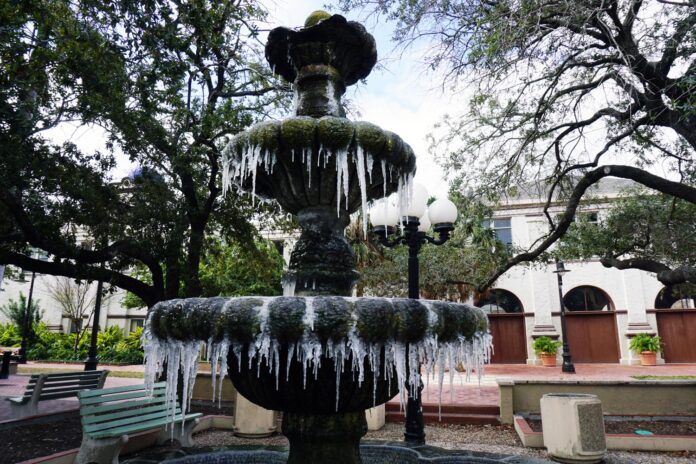Madlin Mekelburg Austin American-Statesman
AUSTIN, Texas — The Texas Senate on Monday unanimously approved a sweeping proposal to overhaul regulation of the Texas energy industry in the wake of last month’s deadly winter storms and power outages that left more than 4 million people without electricity.
The Texas House is scheduled to debate a similar package of bills Tuesday addressing the outages, including requiring power generators to weatherize equipment.
“Senate Bill 3 comprehensively addresses the root issues that led to the major failures that occurred during the Valentine’s Day winter storm, namely weak oversight, poor communication and a lack of coordination,” said GOP state Sen. Charles Schwertner, of Georgetown, the bill’s sponsor. “This bill offers reforms that will strengthen the state’s prevention of and preparation for energy emergencies, to ensure that this never happens again.”
Lawmakers grilled energy leaders during multiple days of legislative hearings following the crisis, prompting top officials at the state’s electric grid operator and the Public Utility Commission to resign from their posts.
State leaders have called for reforms at the Electric Reliability Council of Texas, the state’s electric grid operator, and across the entire energy delivery system.
“The proposed changes in SB 3 will revolutionize Texas’ prevention and preparation strategies for any energy emergencies we encounter going forward,” Lt. Gov. Dan Patrick said in a statement. Patrick, a Republican, presides over the Texas Senate.
SB 3 requires all generation, transmission and natural gas facilities and pipelines in the state to weatherize equipment to ensure operation during extreme weather conditions.
Companies could face a fine of up to $1 million if they fail to comply with the requirement.
The bill would task the Public Utility Commission and the Texas Railroad Commission, which regulates the oil and gas industry, with overseeing weatherization requirements by implementing rules for preparedness.
During the February winter storms, equipment froze and stopped working and it was clear that key infrastructure operators had not sufficiently protected their equipment from the cold temperatures and icy conditions.
The bill does not outline who would foot the bill for weatherization: the state, energy companies or some combination of the two. Experts have said it could cost as much as $1 million per electric generation unit to weatherize, putting the price tag for all systems in the state in the neighborhood of $400 million.
“We are putting in place a balanced and reflective and appropriate oversight structure with increased emphasis on certain areas with an enhanced penalty matrix and overall penalty amount,” Schwertner said. “That is significant, and I think it turns a dial regarding oversight regulation enforcement here in Texas.”
The proposal also would establish an energy emergency alert system to notify Texas residents when the state’s power supply may be “inadequate to meet demand” or in the event of power outages.
The alert system would rely on a number of state agencies, including the Public Utility Commission, which would be tasked with adopting criteria to determine when such an alert would be necessary. The Texas Department of Transportation, the Texas Division of Emergency Management, the Department of Public Safety and the office of the governor would be involved in administering the alert.
A cost estimate for Schwertner’s bill shows that implementing such an alert system could cost the state roughly $800,000 over the next five years.
The Legislative Budget Board estimates that SB 3 could cost the state $73 million over the next five years, assuming lawmakers want to allocate funds to implement provisions of the bill. This would not include the cost of weatherizing equipment.
The largest estimated costs come from the Railroad Commission, which provided a rundown of potential costs of conducting weatherization assessment reviews and to track interruptions in service — another requirement of the bill.
The bill also looks to regulate the price of electricity during a disaster, in light of a pricing error during the February power crisis that resulted in about $16 billion in overcharges for wholesale electricity.
Under the proposal, officials would establish an emergency pricing program based on actual costs associated with power generation during an emergency.
“This mechanism is to establish a price that can be in effect during an emergency,” said Democratic state Sen. Nathan Johnson, of Dallas, who authored an amendment to make technical changes to that portion of the bill. “This will make sure the generators stay turned on, to make sure they’re compensated for the power that they produce but so we’re not setting a price artificially high that just causes us all to lose money, that by itself can cause prices in the commodities gas market to rise.”




